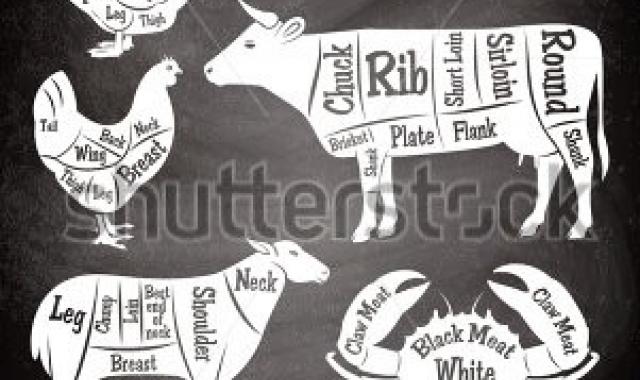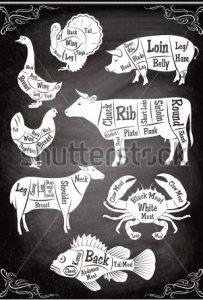
Are you lean yet? Reached your weight loss (aka fat loss) goals yet? If not take heart, we’re here to help; it’s not rocket science although many would have you believe that it is.
Keeping it simple keeping it real; two of the biggest challenges we see with our clients are not eating enough or eating too much and lacking in enough quality protein. If you only did two things: kept the serving sizes adequate/in check and consumed enough protein you would see amazing results on a weekly basis.
Not only in loss of body fat but increased muscle and definition (tone) provided you are training properly and consistently. But what about the carbs and fat? Should I go keto? Should I go low fat? We’ll discuss the energy sources in Part 3.
The ‘meat’ of the matter and the pun is most assuredly intended is that you’ve got to consume adequate protein. The only complete sources of protein (meaning it has all the amino acids and goodies needed to build a healthy strong body are sourced from animals, fowl or fish). Yep, it’s got to run, fly or swim to be beneficial in that area.
Are you able to get adequate protein from plant sources? Some say it’s possible, we don’t recommend it as man is an omnivore. What is an omnivore? "An animal or person that eats food of both plant and animal origin”. When you go against nature it never works in your favor.
All that being said what are the best sources of running, flying and swimming? Depends on your taste buds - you do not need to eat all three. You can survive and thrive on just seafood, just fowl or just meat. I prefer a variety; some excellent choices are wild seafood, pastured fowl, beef, pork, lamb and bison, wild game and eggs from pastured free range fowl.
What matters more is how your animal was raised. If it swims it’s meant to swim in an ocean, lake or pond not on a “farm”. If it flys or runs it’s meant to be raised on pasture, not in a cage and not eating gmo corn and soybeans. Chickens are omnivores and should eat plants, seed, earthworms and insects . Cows are herbivores, they are not meant to eat corn, soy and other grains. Their natural diet consists of plants – grasses primarily with a little leaves, twigs and bark from bushes and trees.
If they’re not meant to eat those foods why are they fed them in conventional farming practices? Why for profit; Big Agri wants to make money - less time to fatten, cheaper and higher energy food source. Their bottom line not your health is the goal.
Before I stay too long on my soapbox let’s get back to our dietary protein needs. Sedentary individuals need about .7 g protein per pound of bodyweight. Hard training athletes need about 1-1.25 g. If you fall somewhere in between, adjust the math.
We don’t need to be exact, this does have to be sustainable after all. Let’s use the average male or female that works out 3-4 times a week doing both strength and conditioning training be it CrossFit or the more traditional type. Either way you are lifting heavy things and breathing hard – you need protein to build/maintain muscle and other cell functions. Somewhere in the neighborhood of 4 – 8 oz is going to be your portion size. Female and on the smaller size (muscle wise) aim for 4 ish most meals. Male and on the larger size (muscle wise) aim for 8 ish most meals. Most of us will fall somewhere in between. And there will be outliers. This is aimed at the general fitness oriented population.
Calories are a hotly debated area and needs vary widely among individuals depending on age, activity level and genetics to name a few. But they do matter. Eat more than you need and you will gain body fat, eat less than you need and you will slow your metabolism and store body fat. A very general rule is 12-14 calories per pound of bodyweight/lean body mass* to lose, 15-17 to maintain and 18-20 to gain. Again, there are many factors along with individual variances. This is only meant to be a general guideline for the exercising general population.
*Use lean body mass if you are more than 15-20 pounds overweight
Now that we’ve got the calories and protein needs met the rest is easy. Stay tuned for Part 3: Carbs, Fats & Putting it All Together. . .

